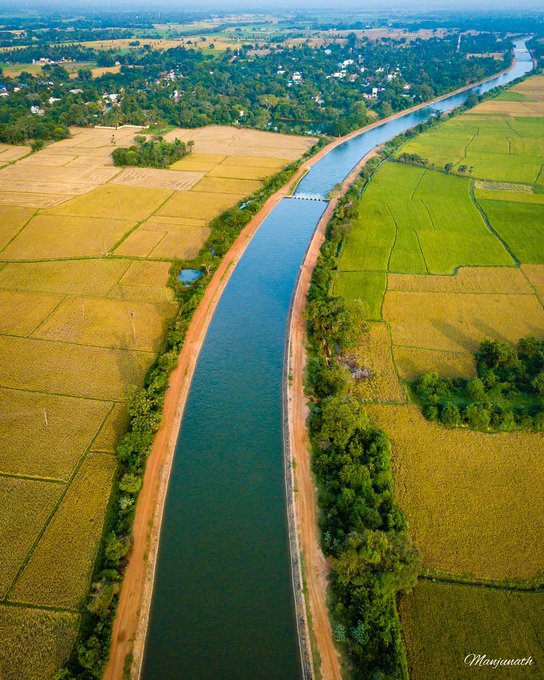Kallanai Dam : The Fourth Oldest Irrigation Dams in the World.
Kallanai Dam is also known as the “Grand Anicut”.
It is one of the oldest irrigation dams in the world built around 2000 years ago. It is build cross the Kaveri River in Trichy District in the state of Tamil Nadu in South India.
It is the fourth-oldest water-diversion or
water-regulator structures in the world and the oldest in India which is still
in use. The dam was originally built by King Karikalan of
the Chola Dynasty in c. 100 BC – c. 100 AD. The main purpose of the Kallanai dam was to divert the waters of the Kaveri across the fertile delta region for irrigation via canals. The dam splits the river Kaveri into 4 streams known as Kollidam Aru, Kaveri, Vennaru and Puthu Aru.

The dam was constructed in an elegant way to see the dam from any point. The dam is about 329 m (1,079 ft) long, 20 m (66 ft) wide and 5.4 m (18ft) high.
The unique structure of the Kallanai dam involves large stones sunk in the Cauvery river to divert the water flow to the fertile delta. The main function of the dam was to retain the water supply in the Cauvery and flow the surplus into Coleroon through the Ullar river. The dam was re-modeled by the British during the 19th century.
In 1804, Captain Caldwell, a military engineer was appointed to promote the irrigation in the delta region. After some study he found out that only a small amount of water was left for irrigation as the maximum water went to Kollidam. Caldwell proposed a solution by raising the dam. Hence, the dam stones were raised which increased the capacity of the dam.













Comments
Post a Comment